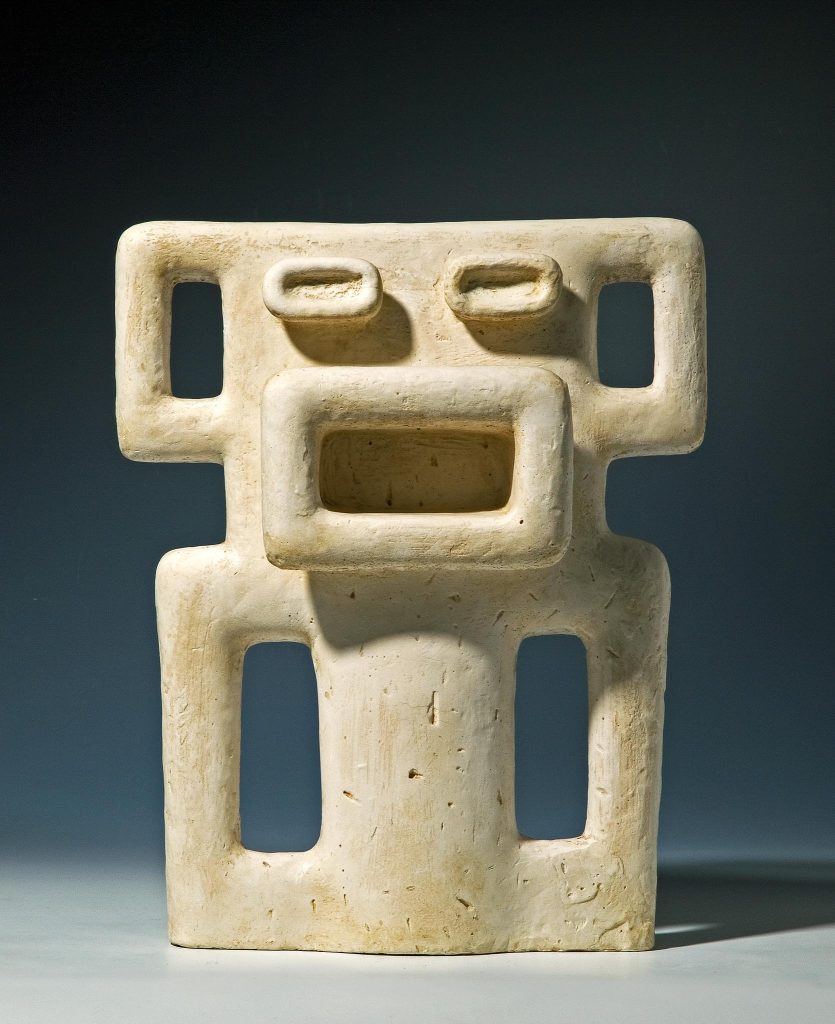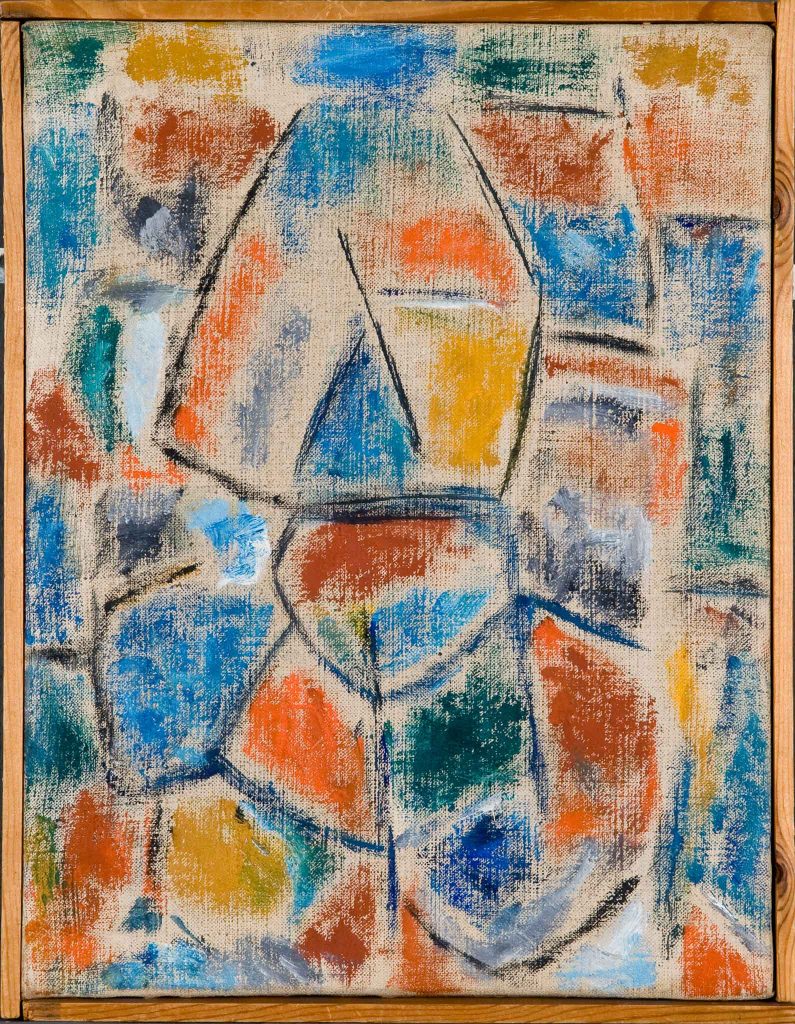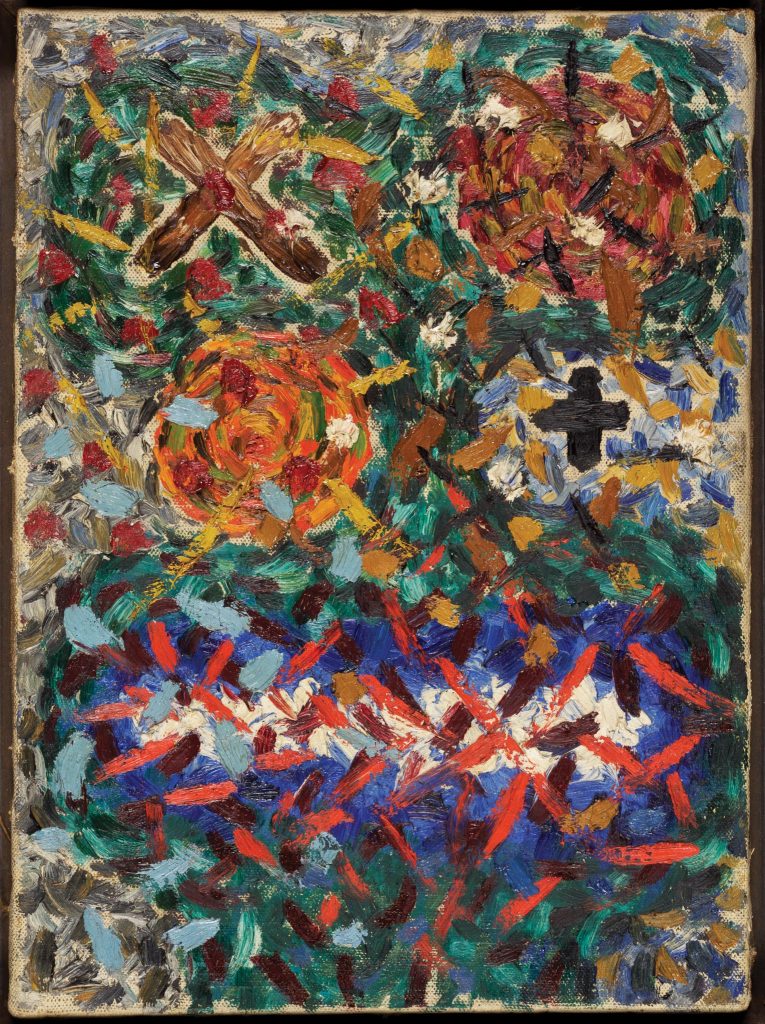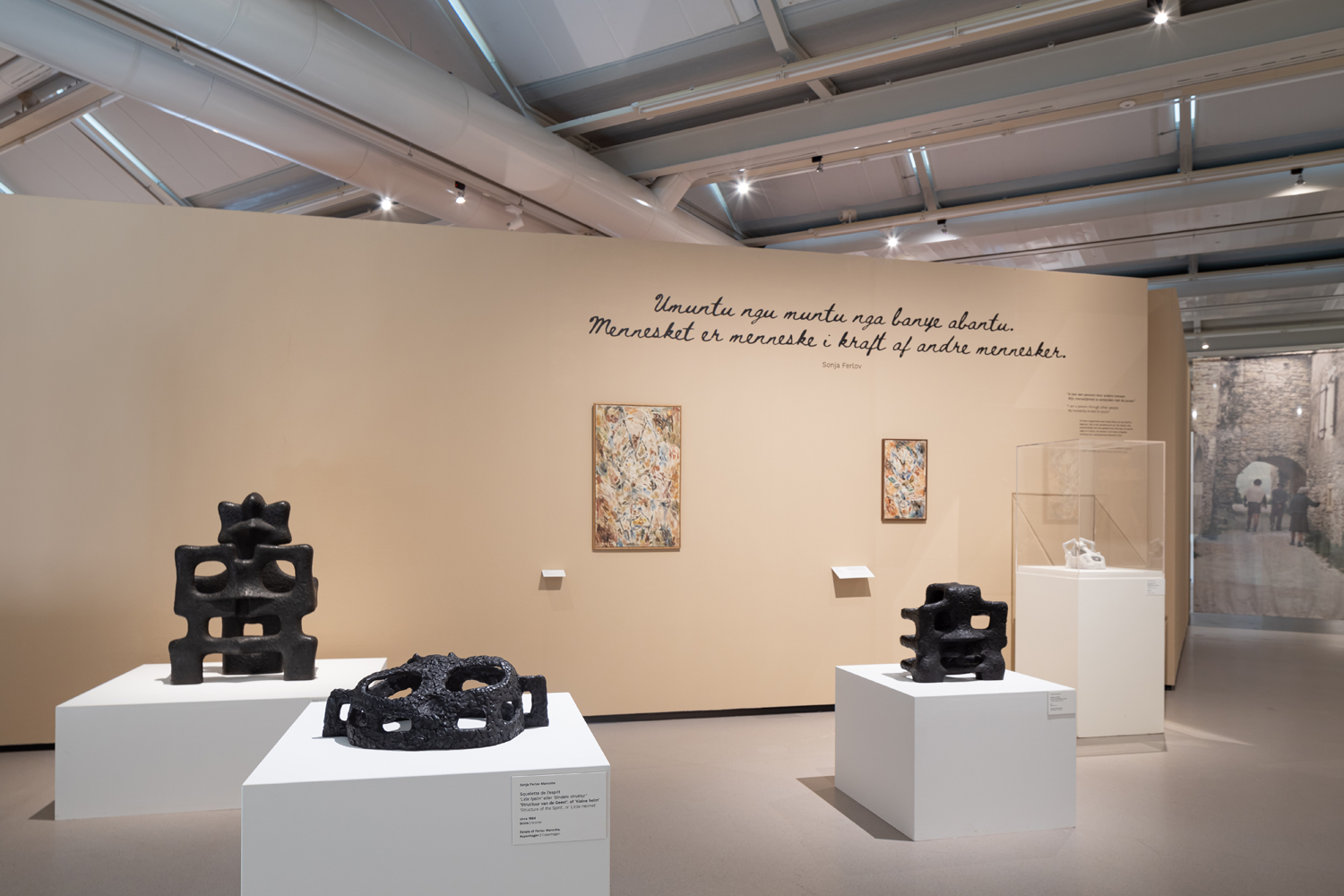Exhibition
Je est un autre
Ernest Mancoba and Sonja Ferlov
This exhibition brings over 60 of works together in an intimate overview. It showcases the works of South African-born sculptor and painter Ernest Mancoba (1904-2002) and Danish-born sculptor Sonja Ferlov (1911-1984). Both were involved at the founding of the Cobra movement in Denmark, albeit from the sidelines. In 2019, Centre Pompidou in Paris presented two retrospectives of their oeuvre and in the same year the Statens Museum of Art in Copenhagen showed an overview of Sonja Ferlov.

Recluses
The life stories of Ferlov and Mancoba are compelling and had a profound impact on their art. Their interracial relationship was unique at the time and they experienced backlash and racism. They were to spend much of their lives together, almost as recluses from society, drawing social and artistic companionship from each other. Because of this close relationship, their artistic works influenced the other’s whilst remaining undeniably individual. They also shared an interest in other cultures. The exhibition Je est un autre addresses how these different aspects affected their work and informed their belief that the purpose of art was to help humanity find common ground.
Je est un autre
Their relative isolation that started in the latter years in Kattinge continued through the rest of their lives in France, exacerbated by their very humble circumstances. It did not mean they grew indifferent to society, indeed their concerns about societal discord seemed to motivate their art, as can be seen in their later works, such as Ferlov’s “Mask and Figure” (1977-84) and Mancoba’s kota-esque paintings.
Mancoba and Ferlov quoted the nineteenth-century French poet Arthur Rimbaud “Je est un autre“, which Mancoba translated as “I is somebody else”. Rimbaud’s grammatical error of using est (is) instead of suis (am) is poetic intent. Mancoba and Ferlov may have interpreted it as a symbol that it is impossible to actually be the other, but that one should try. It is the message they wanted to convey to the world: we have suffered, but we hold out hope that humanity can find a way to minimise suffering.

Paris
Ernest Mancoba came to Paris from South Africa to study in 1938. He had been taught woodcarving at a missionary school, where his talent had been noticed. But he also understood that in his colonised homeland his opportunities as a black African would be limited. Sonja Ferlov grew up in a well-to-do family in Denmark and attended several arts and crafts schools, where she was friends with artists such as Richard Mortensen and Ejler Bille. She was also part of the surrealist Danish artists’ society Linien (1934-39) and contributed to the magazine of the same name. In 1936, she moved to Paris, where she was befriended artists such as Alberto Giacometti, Joan Miró and Max Ernst.
Mancoba and Ferlov met in Paris shortly before the outbreak of World War II. They were part of the same circle of friends and soon became lovers. The War brought them both trauma and unexpected happiness. Mancoba was interned in a POW camp, and at the Drancy transport camp, he encountered shocking levels of violence, including prisoners turning violent against each other. But they were also allowed to marry at the St Denis camp, where a German soldier secretly photographed them on their wedding day and gifted them the prints.
The War profoundly affected Ferlov’s work. The spontaneous and rapid making of her earlier surrealist works gave way to sculpting as long ruminations – or as she describes it, a way to make order out of chaos. “Skulptur” (1940-46), which is included in the exhibition, was the only major work Ferlov made during the length of the war and beyond. It is a work of great tension, the sculpture’s enveloping skin barely able to contain the mass; it creates an aura that is simultaneously “silent” and yet speaks volumes.

Kattinge
In 1947, Ferlov and Mancoba, along with their one-year-old son, left war-torn Paris and settled in Kattinge, Denmark. They would remain there for five years. Although of relatively short duration, the time had a huge impact on their art and lives. It was a time of inventiveness that influenced their later work, with Ferlov exploring both the artistic directions that would come to tear apart the Danish avant-garde community and Mancoba discovering the frescoes of Danish medieval churches, among other Scandinavian influences.
The frescoes may have inspired Mancoba to take up painting. In this exhibition we bring together some of his paintings and drawings of this time, some of which have never been exhibited or not for decades. For instance, “Untitled” (1950/51), in a private collection, has not been exhibited since the 1970s.
In 1948, Ferlov and Mancoba were invited to participate in the annual exhibition of the Danish art association Høst. There, they met and be-friended the Danish avant-garde and the artists who would become associated with Cobra (1948-1951) including Karel Appel, Constant and Corneille. They became members of the association in 1949 but that year saw Høst effectively disband in acrimony, with the avant-garde unable to reconcile their differences over the direction of art. Mancoba and Ferlov became estranged from the group. They were invited to be guests of other associations but never to be members. Since the associations were the main platform for exhibition and sales in Denmark, it affected the family’s livelihood as artists. Their artistic isolation, intolerance of Mancoba’s ethnicity and concerns about their son Wonga’s education eventually motivated the family to return to France.
Richly illustrated catalogue
The exhibition Je est un autre. Ernest Mancoba and Sonja Ferlov is part of the anniversary year Cobra 75 and, together with the exhibitions We Kiss the Earth. Danish Modern Art 1934-1948 and Becoming Ovartaci forms a triptych on Danish modern art. The three exhibitions are accompanied by a richly illustrated catalogue compiled by the guest curators and published bilingually (Dutch and English) by Waanders Uitgevers. The book We Kiss the Earth is available at the Cobra Museum shop, among others.
Guest-curator Winnie Sze
Winnie Sze is based in Cape Town as an independent curator. During her fellowship at the Van Abbemuseum (Eindhoven), she researched Ernest Mancoba’s relationship with the Cobra artists. Sze has a deep interest in a broader approach to visual art and focuses on socially-oriented, creative collaborations in South Africa. Sze studied fine art at the University of British Columbia (Vancouver, Canada) and previously ran a contemporary art project venue in London.
Celebrating Cobra 75
2023 marks 75 years since the revolutionary Cobra movement was founded in Paris. The Cobra Museum of Modern Art in Amstelveen is celebrating this anniversary year with a major exhibition programme. Cobra (1948-1951) was an international movement of young, progressive artists creating colourful, expressive-spontaneous art. In the years after World War II, they caused a revolution: a breakthrough in modern art that continues to this day in artistic conceptions and artistic expressions. The name Cobra is a composite of: Copenhagen, Brussels and Amsterdam. The capitals where the founders of this artist group originated. These include Jorn from Denmark, Dotremont and Noiret from Belgium, Appel, Corneille and Constant from the Netherlands. Besides these big names, the Cobra Museum makes a strong case for an inclusive approach to the Cobra movement and regularly adds to the traditional Cobra canon. In 2019, for example, there was a major exhibition “New Nuances” specially dedicated to women artists in and around Cobra.
With thanks to
The anniversary programme Cobra 75 has been made possible by our partners and generous supporters. We especially thank the municipality of Amstelveen, VriendenLoterij, Trebbe, BPD, Rabobank Amstel & Vecht, Hizkia, Prins Bernhard Cultuurfonds, New Carlsberg Foundation, Embassy of Denmark, KEIM and the Cobra Business Club.
Artist talk: cartoons as an act of resistance



